
Amarna is an extensive Egyptian archaeological site containing the remains of what was the capital city of the late Eighteenth Dynasty. The city was established in 1346 BC, built at the direction of the Pharaoh Akhenaten, and abandoned shortly after his death in 1332 BC. The name that the ancient Egyptians used for the city is transliterated as Akhetaten or Akhetaton, meaning "the horizon of the Aten".

Nefertiti ) was a queen of the 18th Dynasty of Ancient Egypt, the great royal wife of Pharaoh Akhenaten. Nefertiti and her husband were known for their radical overhaul of state religious policy, in which they promoted the earliest known form of monotheism, Atenism, centered on the sun disc and its direct connection to the royal household. With her husband, she reigned at what was arguably the wealthiest period of ancient Egyptian history. Some scholars believe that Nefertiti ruled briefly as Neferneferuaten after her husband's death and before the ascension of Tutankhamun, although this identification is a matter of ongoing debate. If Nefertiti did rule as Pharaoh, her reign was marked by the fall of Amarna and relocation of the capital back to the traditional city of Thebes.
Thutmose, also known as "The King's Favourite and Master of Works, the Sculptor Thutmose", was an Ancient Egyptian sculptor. He flourished around 1350 BC, and is thought to have been the official court sculptor of the Egyptian pharaoh Akhenaten in the latter part of his reign. A German archaeological expedition digging in Akhenaten's deserted city of Akhetaten, known today as Amarna, found a ruined house and studio complex in early December 1912; the building was identified as that of Thutmose based on an ivory horse blinker found in a rubbish pit in the courtyard inscribed with his name and job title. Since it gave his occupation as "sculptor" and the building was clearly a sculpture workshop, the determination seemed logical and has proven to be accurate.
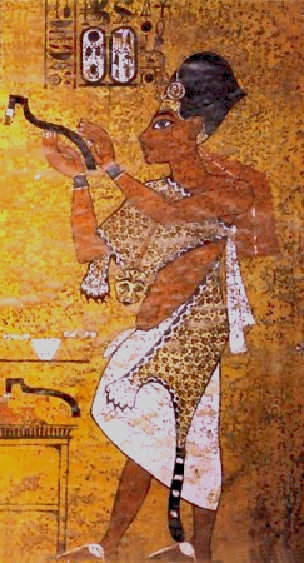
Ay was the penultimate pharaoh of ancient Egypt's 18th Dynasty. He held the throne of Egypt for a brief four-year period in the late 14th century BC. Prior to his rule, he was a close advisor to two, and perhaps three, other pharaohs of the dynasty. It is speculated that he was the power behind the throne during child ruler Tutankhamun's reign. His prenomenKheperkheperure means "Everlasting are the Manifestations of Ra," while his nomenAy it-netjer reads as "Ay, Father of the God." Records and monuments that can be clearly attributed to Ay are rare, both because his reign was short and because his successor, Horemheb, instigated a campaign of damnatio memoriae against him and the other pharaohs associated with the unpopular Amarna Period.
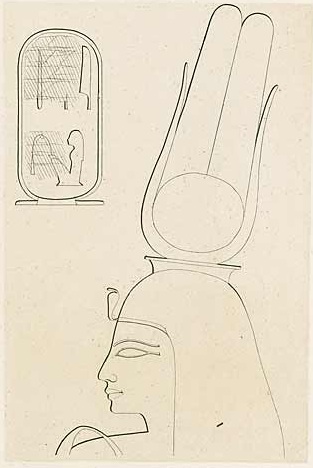
Tey was the Great Royal Wife of Kheperkheprure Ay, who was the penultimate pharaoh of Ancient Egypt's Eighteenth Dynasty. She also had been the wet nurse of Nefertiti.

Located in Middle Egypt, the Tombs of the Nobles at Amarna are the burial places of some of the powerful courtiers and persons of the city of Akhetaten.
Southern Tomb 23 is a sepulchre in Amarna, Egypt. It was used for the burial of Any, whose titles included, Royal scribe, Scribe of the offering-table of the Aten, Steward of the estate of Aakheperura.
Penthu was an Egyptian noble who bore the titles of sealbearer of the King of Lower Egypt, the sole companion, the attendant of the Lord of the Two Lands, the favorite of the good god, king's scribe, the king's subordinate, First servant of the Aten in the mansion of the Aten in Akhetaten, Chief of physicians, and chamberlain. These titles alone show how powerful he would have been in Eighteenth Dynasty Egypt.

Panehesy was an Egyptian noble who bore the titles of 'Chief servitor of the Aten in the temple of Aten in Akhetaten'.

The ancient Egyptian noble Parennefer was Akhenaten's close advisor before he came to the throne, and in later times served as his Royal Butler, an office which brought him into intimate contact with the king. His titles include "The King's Cup Bearer," "Washer of the King's Hands," "Chief Craftsman," and "Overseer of All the Works in the Mansion of Aten." He was instrumental in imposing the "Amarna style" in architecture.
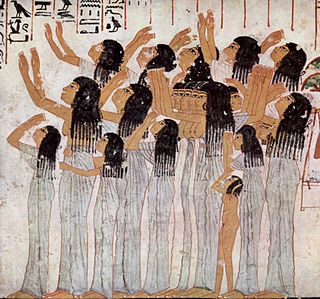
Ramose was an ancient Egyptian name, meaning "Ra is born". Variants of the name include Ramesses (Ramessu) and Paramessu; these various spellings could be used to refer to the same person.
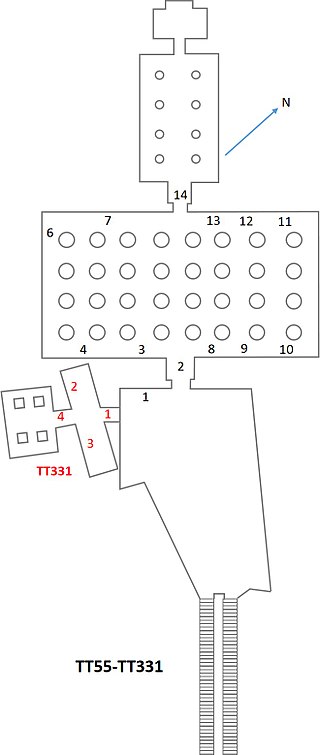
Tomb TT55 is located in Sheikh Abd el-Qurna, part of the Theban Necropolis, on the west bank of the Nile, opposite to Luxor. It is the burial place of the ancient Egyptian Vizier Ramose. It has a main room originally containing thirty-two columns and a corridor with eight columns. This tomb is notable for the high quality decorations in both the traditional and Amarna styles.

The Ancient Egyptian noble, Ramose was Vizier under both Amenhotep III and Akhenaten. He was in office in the last decade of Amenhotep's III reign and at the beginning of the reign of the latter king. Ramose appears on jar labels found in the palace of king Amenhotep III at Malkata. Here appears also the vizier Amenhotep-Huy. Both viziers are also shown side by side in the temple of Soleb. In the New Kingdom the office of the vizier was divided in a northern vizier and a southern one. It is not entirely clear whether Ramose was the southern or northern one.
Mahu was Chief of Police at Akhetaten.

Amenhotep (Huy) was the high steward of Memphis under Amenhotep III in the Egyptian 18th Dynasty. With this title he was one of the highest officials at the royal court.
Nakhtpaaten or Nakht was an ancient Egyptian vizier during the reign of Pharaoh Akhenaten of the 18th Dynasty.
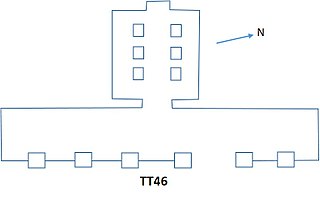
The Theban Tomb TT46 is located in Sheikh Abd el-Qurna. It forms part of the Theban Necropolis, situated on the west bank of the Nile opposite Luxor.
This page list topics related to ancient Egypt.
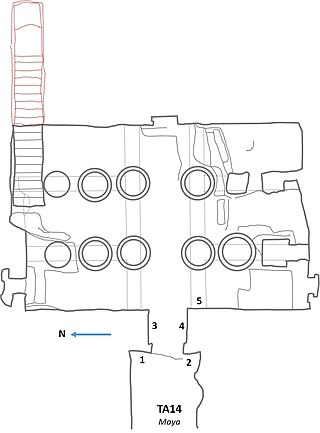
May was an ancient Egyptian official during the reign of Pharaoh Akhenaten. He was Royal chancellor and fan-bearer at Akhet-Aten, the pharaoh's new capital. He was buried in Tomb EA14 in the southern group of the Amarna rock tombs. Norman de Garis Davies originally published details of the Tomb in 1908 in the Rock Tombs of El Amarna, Part V – Smaller Tombs and Boundary Stelae. The tomb dates to the late 18th Dynasty.

Ipy, also transliterated as Apy, was a court official from the time of Amenhotep III and Akhenaten during the Egyptian 18th Dynasty. Ipy was High Steward of Memphis, and a royal scribe.
















